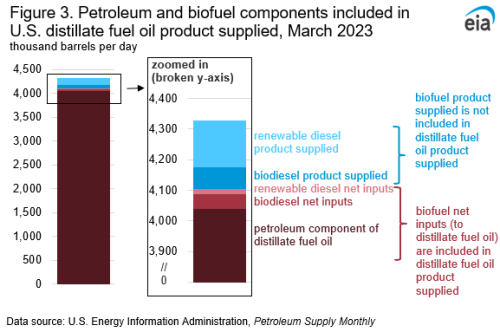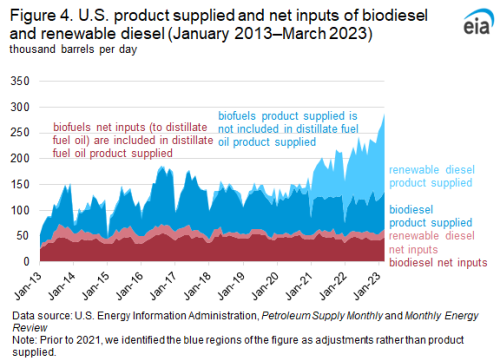The primary cause for the decline is the replacing of petroleum diesel with biofuels, namely renewable diesel, which has gained a larger market share of the region’s diesel pool as clean-fuel programs incentivize biofuels.

Regardless of whether renewable diesel or biodiesel are blended with petroleum distillate or consumed directly, they generally serve the same end uses and can displace volumes of petroleum distillate.

West Coast distillate fuel oil consumption decreased in 2022 and is on track to be even lower in 2023, according to the EIA. In five months in 2022, distillate fuel consumption in the region dropped below the 10-year (2012–2021) minimums. In the three months of 2023 published in the EIA Petroleum Supply Monthly (PSM), consumption for two months were below 10-year lows, and the average monthly consumption was the lowest for those three months since 2000.
This trend is unique to the West Coast, where most of the United States’ new renewable diesel supply is consumed. Data from the California Air Resources Board (CARB) and the US Department of Energy’s Alternative Fueling Station Locator suggest that most of this fuel is consumed in California. EIA does not estimate regional consumption of renewable diesel.
In the rest of the United States, distillate fuel oil consumption has been near five-year (2017–2021) averages and has not shown a noticeable trend, aside from returning to pre-pandemic levels.